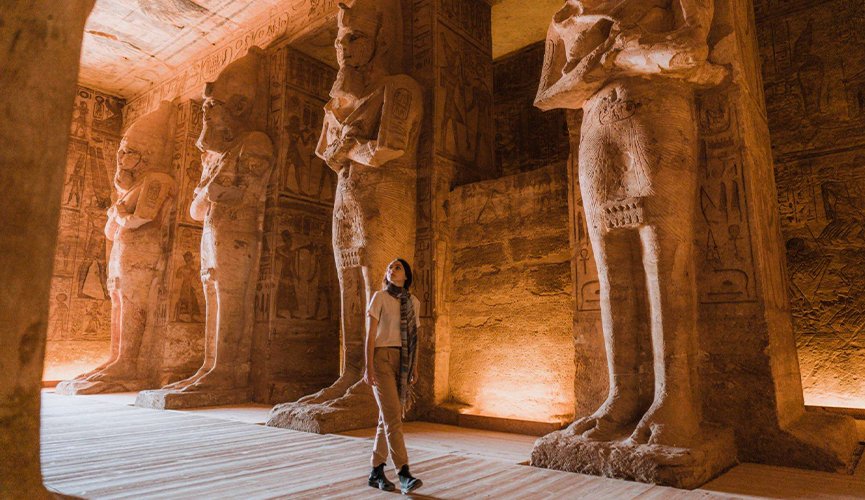Ancient Egyptian Temples were sacred places where the Egyptians worshipped their gods and goddesses. They were also significant political and business hubs. Temples were built to hold figures of the gods and give priests a place to do rituals and make sacrifices. They were also used to store the temple’s wealth and do business.
The first Egyptian temples were simple buildings made of mudbrick. Over time, buildings got more complicated and were made of more robust materials, like stone. The first significant buildings were built during the Old Kingdom (2686–2181 BCE). Most of the time, these temples were near the king’s house and were made to honor the gods of the royal family.
During the Middle Kingdom, which lasted from 2040 to 1640 BCE, temples in Egypt became less dependent on the king and were built in many different places. During this time, religion changed a lot. New temples, like sun temples and temples for the dead, were built.
Egyptian temples were built at their best during the New Kingdom (1550–1070 BCE). Many well-known temples, like Karnak and Luxor, were constructed during this time. There were many drawings, statues, and hieroglyphs all over these buildings.
Egyptian Temples Architecture
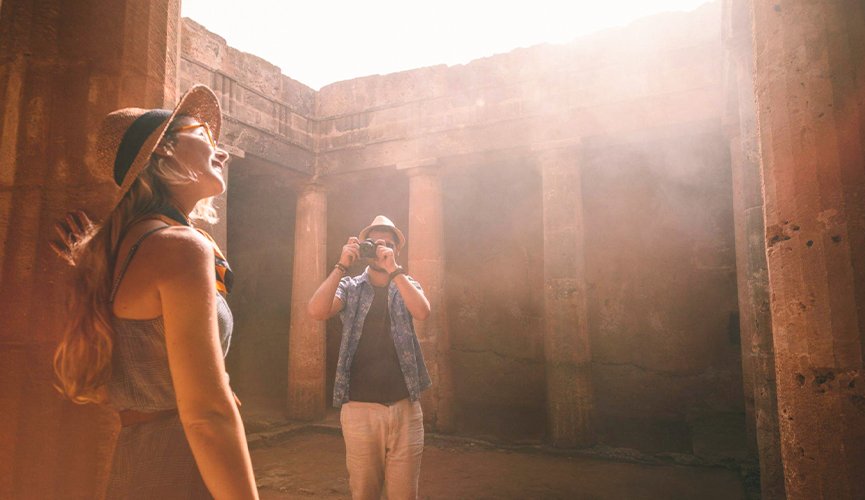
The architecture of ancient Egyptian temples was a reflection of the Egyptians’ religious beliefs and their view of the world. The buildings were made to make people feel awe, mystery, and wonder. The Egyptians could also come to these places to worship their gods and ask them for help.
Most ancient Egyptian temples were cult temples built to honor a specific god or queen. Most cult sites were in big towns, and people came from all over the country to visit them.
Temples in Egypt usually had a symmetrical design, with the entryway at one end and the shrine at the other. Usually, two giant towers at the door were covered with hieroglyphs and reliefs of gods and pharaohs.
Behind the pylons was an open area that was often ringed by colonnades. The court led to the hypostyle hall, a large, pillared room where religious events and celebrations occurred. Often, the most exciting part of a building was the hypostyle hall.
The shrine, which was the temple’s most important room, was at the end of the hypostyle hall. The figure of the god or goddess the temple was made for was kept in the shrine. The priests were the only ones who could go into the temple.
Some temples also had what was called an “Osirian complex.” This was a group of rooms that were all about the god Osiris. During holidays, the figure of Osiris was put on a boat that was part of the Osirian complex.
Here are some additional details about the critical features of Egyptian temple architecture:
- Pylons: The pylons were the most striking feature of an Egyptian temple. They were huge buildings that were often more than 100 feet tall and had hieroglyphs and reliefs. The pylons were like a symbolic entrance to the temple. They showed how powerful and essential the gods were.
- Hypostyle hall: The most significant and most impressive room in an Egyptian palace was the hypostyle hall. It was a big room with rows of beams that held the ceiling. Most of the time, hieroglyphs and reliefs were used to decorate the columns. This added a feeling of awe and grandeur.
- Sanctuary: The sanctuary was the room in an Egyptian building that was the most sacred. It was the most holy part of the temple and held the figure of the god or queen to whom the temple was dedicated. The priests were the only ones who could go into the temple.
- Decorative elements: Hieroglyphs, statues, and drawings were abundant to decorate Egyptian buildings. The decorations told stories about the gods, the pharaohs, and Egypt’s past. Plants and flowers, thought to reflect the forces of life and rebirth, were also used to decorate the shrines.
The architecture of ancient Egyptian temples was a testament to the skill and ingenuity of the Egyptians. The buildings were made to last for hundreds of years and still amaze and inspire people today.
Exploring the Marvels of Famous Egyptian Temples
Egypt, a mysterious country known for its long history and awe-inspiring structures, has a treasure trove of old temples that continue to amaze people worldwide with their size and importance. In this piece, we take a video trip through some of the most impressive ancient Egyptian buildings, each with unique charm and historical appeal; here are the List of ancient Egyptian temples
1. Karnak Temple Complex: A Monumental Marvel
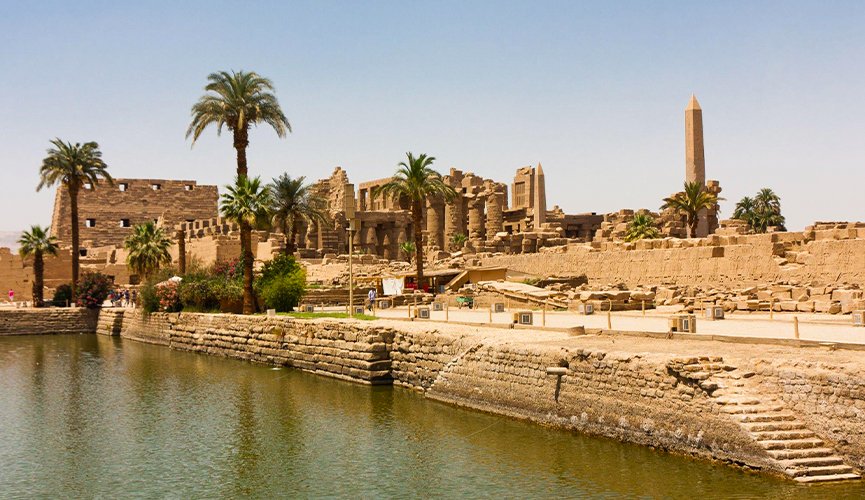
The Karnak Temple Complex is a beautiful piece of architecture on the east bank of the Nile River in Luxor, Egypt. It shows how grand old Egyptian temples were. This vast complex is a maze of giant figures, tall obelisks, and complicated hieroglyphics that honor the gods of the past. The Temple of Amun-Ra, which was built for the main god of Thebes, is the most critical part of Karnak. Its Hypostyle Hall is a sight, with its tall columns and reliefs showing how good the ancient Egyptians were at building.
2. Luxor Temple: A Sacred Oasis in the Heart of Luxor

The Luxor Temple is a beautiful example of an old Egyptian temple building. It is in the middle of Luxor. This temple has an air of heavenly beauty for the restoration of rule and the worship of Amun. Two giant figures of Ramses II guard the door to the temple, and the path of sphinxes that once led from Luxor Temple to Karnak Temple says a lot about how grand ancient Thebes was.
3. Hatshepsut Temple: A Monument to Female Pharaoh
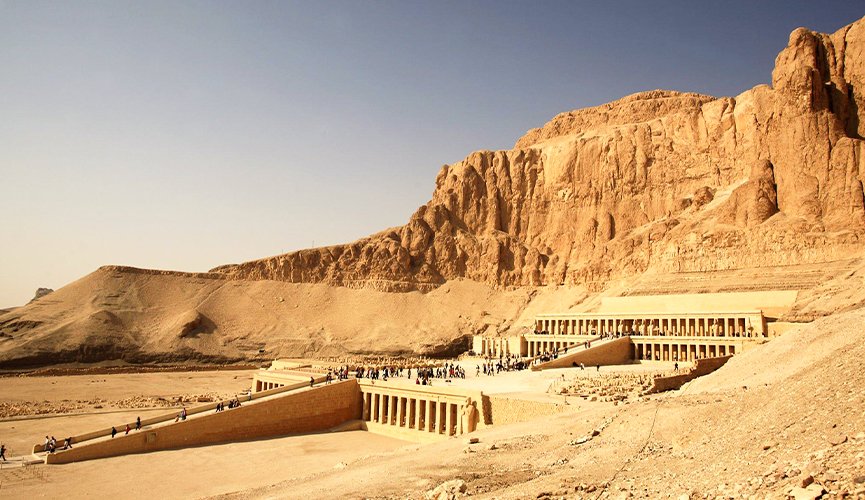
The Hatshepsut Temple, which was built for the female king Hatshepsut and is near the tall rocks of Deir el-Bahri, is an excellent example of ancient Egyptian buildings for tombs. Its structure of terraces and colonnades blends perfectly with the natural scenery, making a beautiful mix of art and nature. The temple is a unique historical prize because its beautiful reliefs tell the story of Hatshepsut’s divine birth and divine right to rule.
4. Temple of Ramesses III: Defending Egypt’s Divine Order
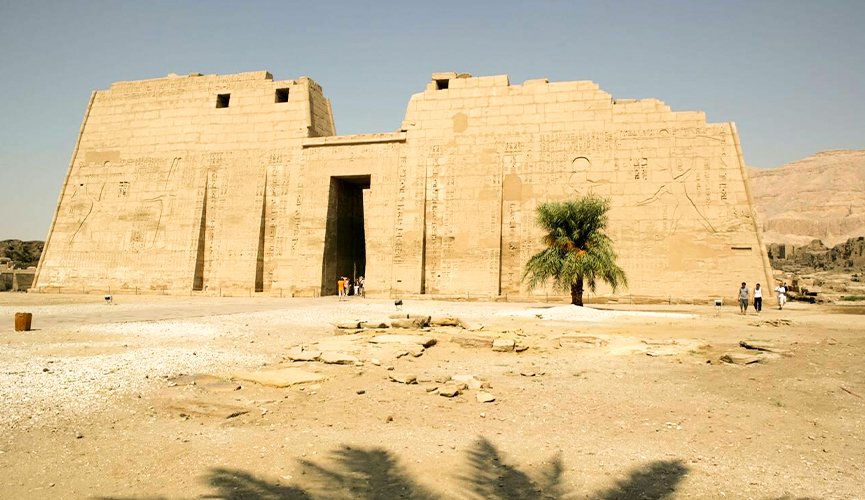
The Temple of Ramesses III at Medinet Habu was built for the brave king Ramesses III. It shows how strong and holy ancient Egypt was. This temple dedicated as a fortress to protect the Theban cemetery, and it still stands as a sign of Egypt’s unshakable dedication to ma’at, the holy order. The detailed wall reliefs show the pharaoh’s war wins and sacred ceremonies, which gives us a lot of information about life in ancient Egypt.
5. Abu Simbel Temples: The Sun Temple Complex
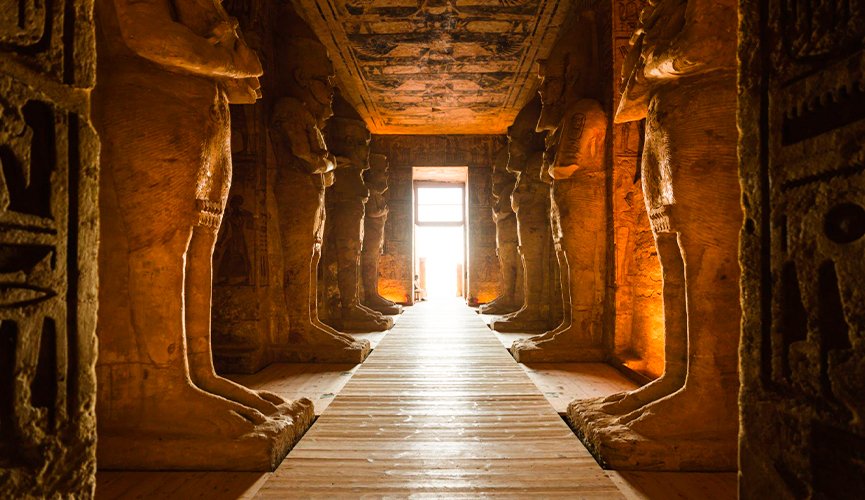
The Abu Simbel Temples, on Lake Nasser’s shores, are a real feat of building and a tribute to the lasting memory of Pharaoh Ramesses II. The twin temples were built to honor the gods Ra-Harakhty and Ptah. They are known for the giant figures that face the rising sun. In the 1960s, the complex was carefully moved to keep it out of the rising water from the Aswan High Dam. This saved this architectural masterpiece for future generations.
6. Philae Temple: Resurrected on Agilkia Island
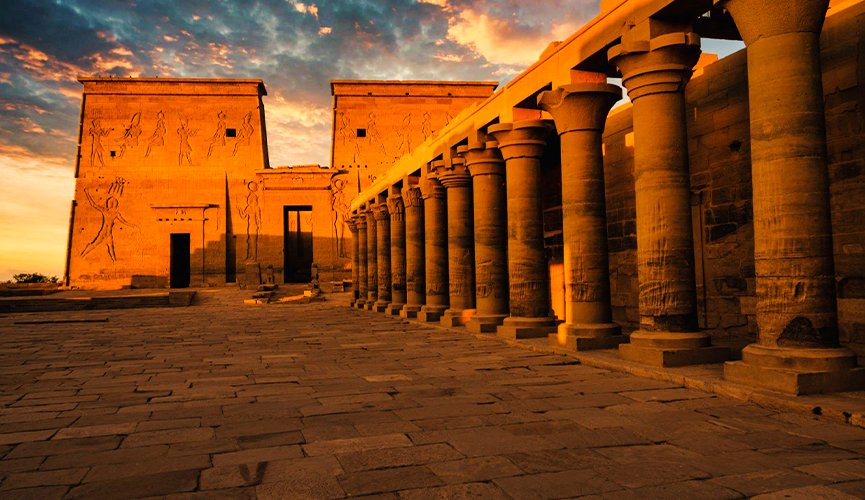
The devotion of researchers and builders who carefully moved the Philae Temple to Agilkia Island after the Aswan High Dam was built is shown by the fact that it is a temple to the goddess Isis. This well-kept temple complex shows how much the ancient Egyptians loved and respected Isis, the goddess of magic and fertility. Its beautiful reliefs and peaceful island setting make it a must-see for anyone interested in ancient Egyptian history.
7. Kalabsha Temple: Nubian Heritage in Egypt
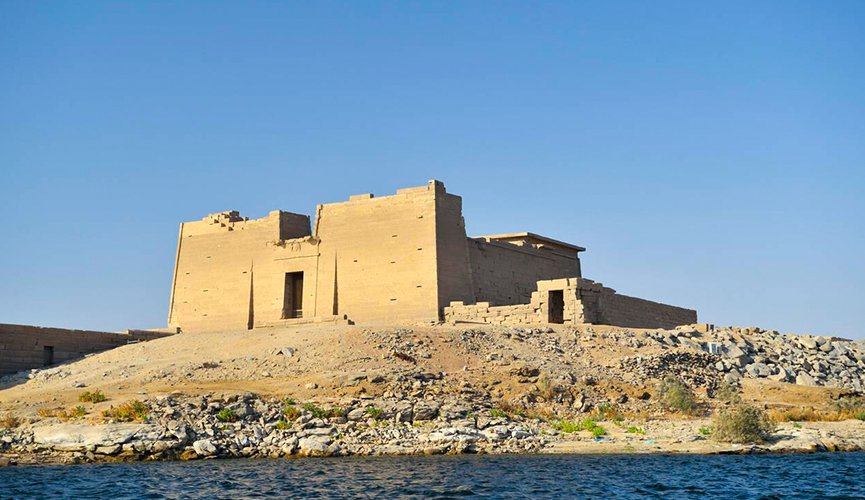
The Kalabsha Temple complex is in the middle of Nubia and shows how Egypt has had a lasting effect on the area. This temple to the Nubian god Mandulis is an excellent example of how the Nubian and Egyptian cultures mixed. Its well-preserved reliefs and impressive buildings show that Egypt and Nubia had a lot of cultural exchange during their time together.
8. Edfu Temple: A Sanctuary for Horus
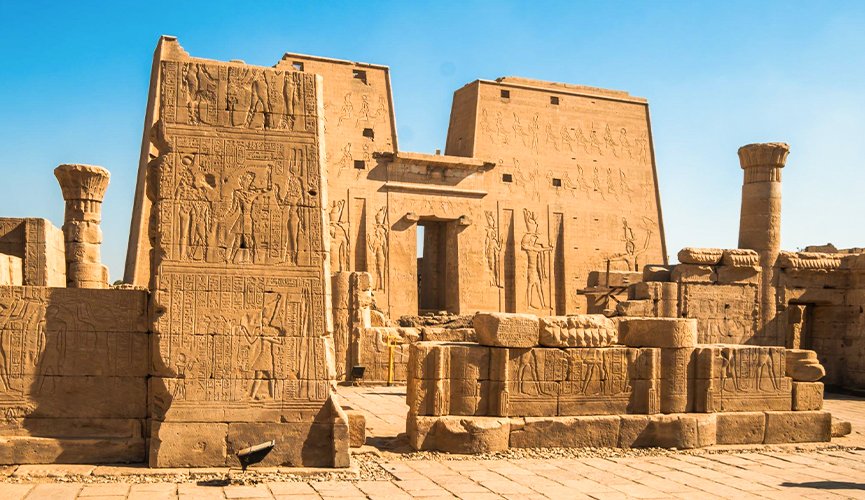
The Edfu Temple is one of the best-kept churches in Egypt. It was built for the falcon-headed god Horus. Its impressive pillar entry and carefully kept hieroglyphics tell us a lot about how the ancient Egyptians worshipped and what they thought about mythology. The yearly Feast of Horus reenacted here gives a glimpse into the old customs that used to be a big part of life inside these holy walls.
9. Kom Ombo Temple: A Dual Devotion
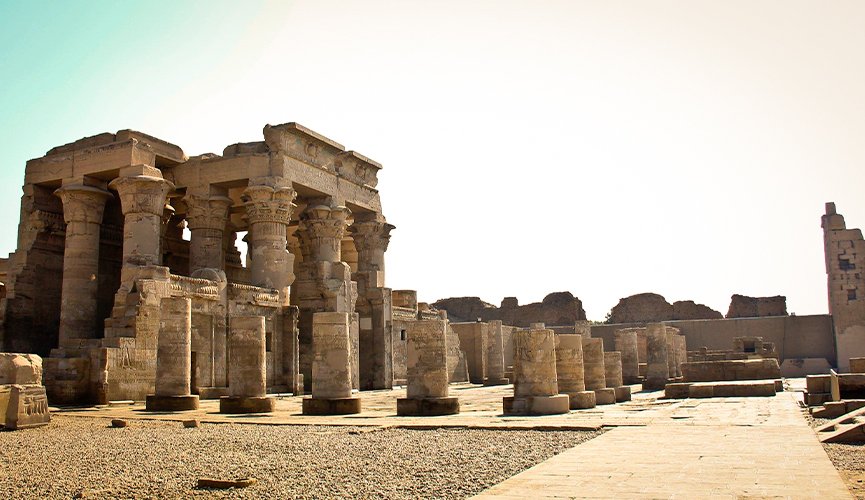
The Kom Ombo Temple is a unique two-god temple on the banks of the Nile. It was built for the gods Sobek and Horus the Elder. This perfect temple complex lets people learn about how the ancient Egyptians believed in both good and evil and how important balance was in their religion. The fact that it is by the Nile adds to its beauty, and tourists have been enchanted by its views for hundreds of years.
10. Temple of Esna: A Hidden Gem
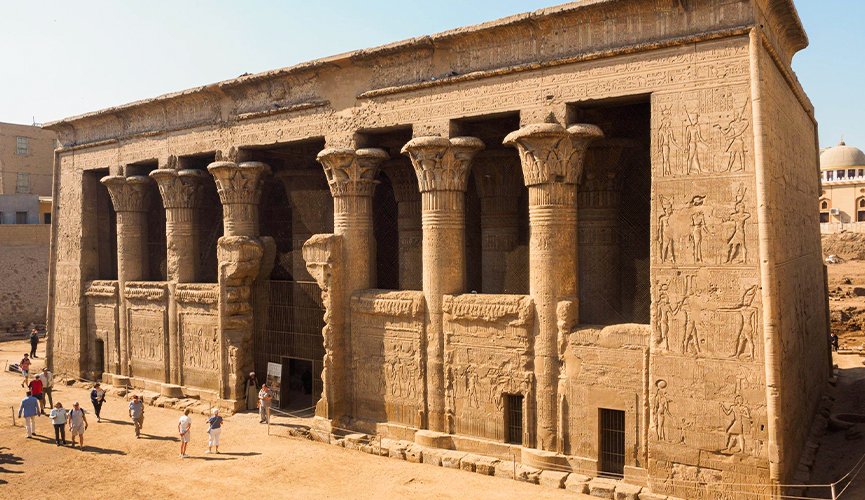
The Temple of Esna is a secret gem among Egypt’s old temples. It is in the modern town of Esna. This temple was built for the god Khnum and is known for its well-kept astronomy roof and detailed reliefs. The fact that it is hidden under a modern town gives this impressive but less-visited temple an air of wonder and drama.
11. Dendera Temple: Celestial Gateway
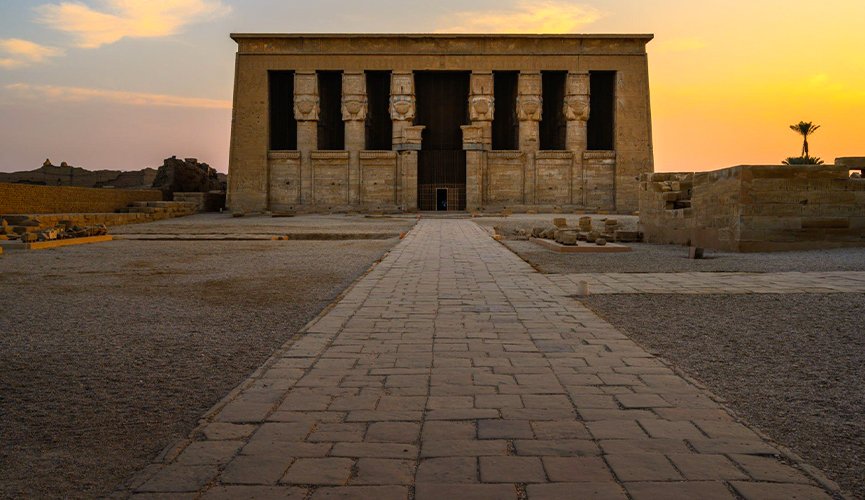
The Dendera Temple building is a doorway to the heavens. It was built for the goddess Hathor. Its beautiful astronomy ceiling, the Dendera Zodiac, is a work of art and science from ancient Egypt. It shows the stars and other objects in the night sky. Archaeologists and fans are still interested in the temple because it is grand and mysterious.
12. Abydos Temple: The Cult of Osiris
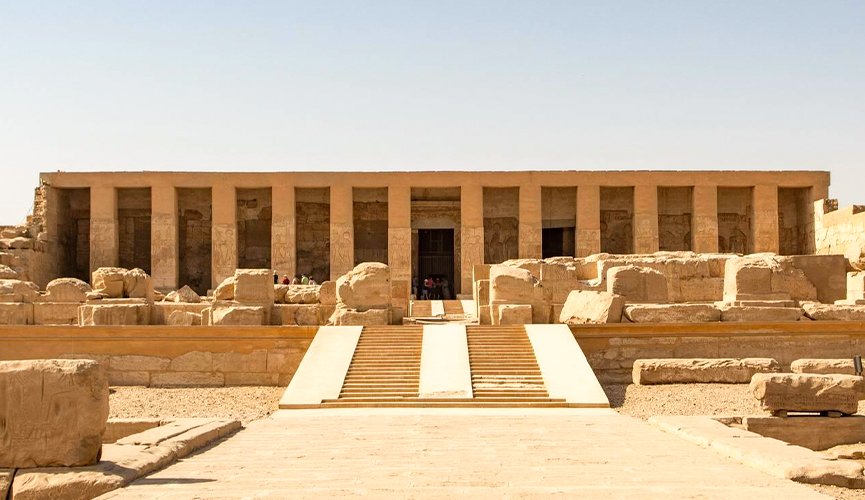
In ancient Egypt, the Temple of Seti I was in the holy city of Abydos. It was built to honor Osiris, the god of the resurrection. This temple complex is famous for its well-preserved reliefs, such as “Abydos King List,” which tells about the old Egyptian pharaohs. Pilgrims and people interested in history are drawn to Abydos because of its spiritual atmosphere and deep ties to Egyptian creation myths.
13. Temple of Ptah: Memphis’ Hidden Treasure
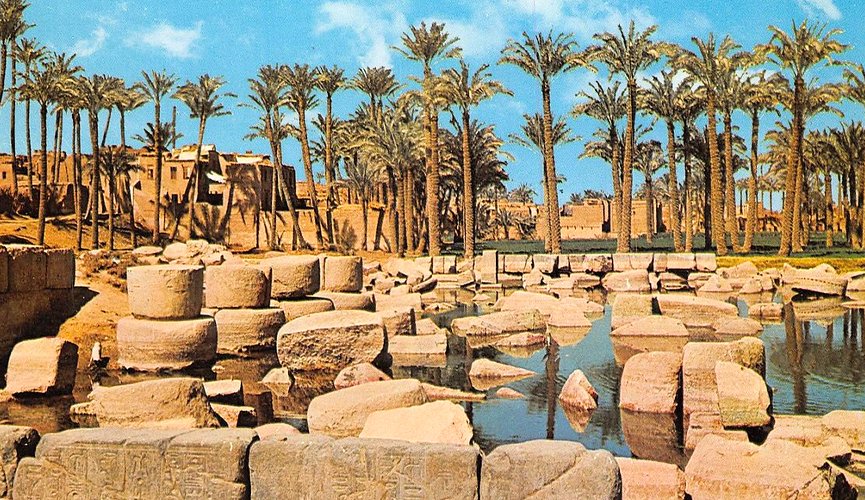
The Temple of Ptah is a secret gem in the old city of Memphis. It was built for the god Ptah, the god of creation. Even though much of the city has fallen apart over time, this temple shows how important Memphis was as ancient Egypt’s religious and political heart. The temple is a must-see for anyone interested in Egypt’s early history because of how peaceful and essential it is historically.
14. Ramesseum: A Monument to the Pharaohs
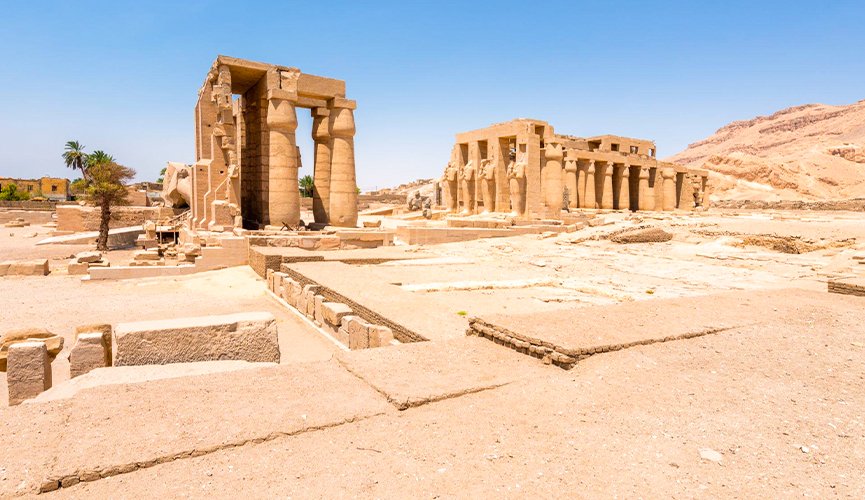
The Ramesseum is a temple built by King Ramesses II to honor the great king and his memory. This impressive building has huge figures, detailed wall reliefs, and a poem called “Ozymandias” written on it. The Ramesseum is a memory of how big Ramesses II’s plans were and how important he was to ancient Egypt.
15. Colossi of Memnon: Guardians of the Valley
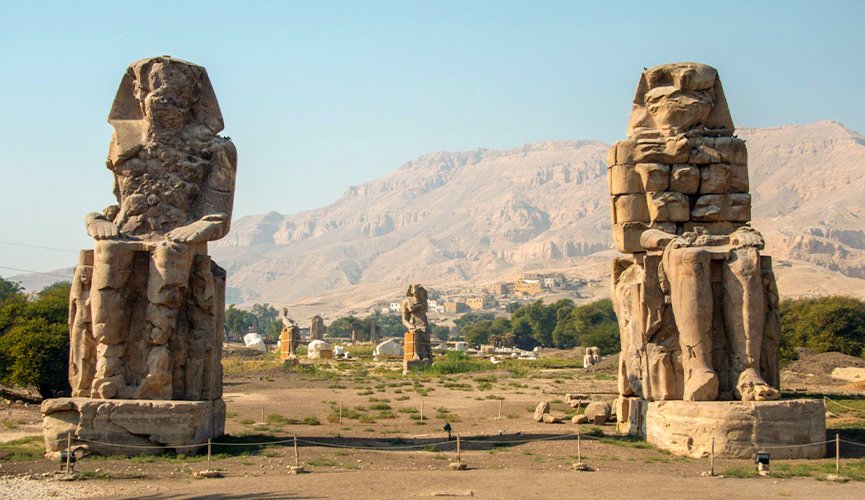
The Theban necropolis has been guarded for thousands of years by the Colossi of Memnon, which are vast figures of Pharaoh Amenhotep III. Each of these giant figures was made from a single block of rock. They have become well-known images of ancient Egypt. The strange “singing” figures, which happen when the morning sun warms the stone, add a mysterious touch to this fantastic site.

